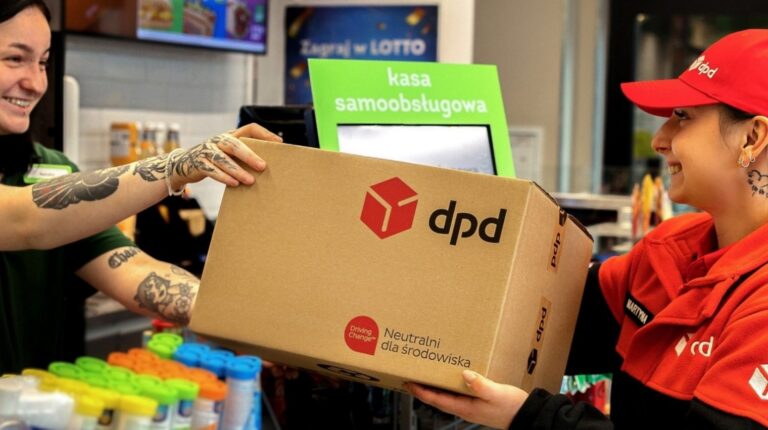E-commerce and, increasingly importantly, re-commerce are growing fast, and the success of any last-mile carrier now hinges on being able to develop commercially tenable and customer-centric out of home (OOH) operations due to their cost, operational efficiency and their sustainable last-mile benefits.
This is a big deal and markets without developed OOH capability such as North and South America have suffered at peak times due to lack of labor and operational capacity. Our clients regularly ask about how to choose the right smart locker for their business. This article aims to cover all the key elements you need to look at to perfect your PUDO network – but please remember there are rarely two identical situations.
Understanding what PUDOs are … and are not
For clarity, a PUDO (pickup-drop off) point is a designated point where customers can pick up or drop off parcels for return or shipment. These points are not generally dedicated solely to parcel services.
A parcel shop is a dedicated store or outlet that offers a wide range of parcel and/or postal services, including shipping, receiving, returns, packaging and sometimes postal banking services.
Both of the above perform effectively the same role from a parcel perspective, albeit PUDOs leverage existing facilities and therefore don’t incur significant fixed costs and allow for significantly faster scalability benefits.

PUDO’s place in OOH – strengths and weaknesses
While lockers are considered to be a super-hot topic and 90% of calls we receive at Last Mile Experts relate to setting up a locker-based OOH network, PUDOs are an integral part of any successful network and are often the first priority when setting up from scratch.
Lockers are expensive and need time to be installed or removed; the best solution is to quickly achieve density via a traditional PUDO network and to then prudently add lockers in selected locations, over time, and develop a mixed network. Moreover, lockers can be used where suitable PUDO locations are unavailable, or where volumes are higher than a PUDO can handle (approximately 50 parcels per day is usually the limit for PUDOs, even at peak). Over time, lockers can be introduced in economically viable locations.
Interestingly, we observe a temptation to kick off projects with lockers to gain interest, improve Net Promoter Score and gain PR coverage or investors. However, PUDOs are a key element of any complete and efficient OOH network, especially where next-gen PUDO stores are concerned.
Surprisingly, many operators install 50 to 150 lockers in a country and then wonder why it doesn’t work. The answer is simple: lockers (or PUDOs for that matter) need density; unless they have reasonable national coverage for the sender, or are easily accessible for the consignee, they will surely fail. This implies several thousand units for a typical European country, and far more for large countries such as China, the USA or Mexico. Of course, operators, especially e-commerce or consolidators, can seek to supplement their own lockers or PUDOs with third party ones, so they have an easier task.
Let’s look at the relative strengths of a PUDO. They are generally cheaper and faster than lockers to implement. If your partner is a large retailer and you have the right process and software tools, you can launch several thousand PUDOs in a matter of months and with minimal financial investment. This is because, with a standardized process and software, you can implement (train, on board and launch) incremental points in large batches with a cost as low as a few hundred dollars a point (largely relating to branding). Of course, if incremental hardware such as a PDA or drop box is needed the cost can grow to US$1,000-US$3,000 but will still be a fraction of what any locker will cost.
An extensive locker network, on the other hand, will take much more time (and money) to deploy. You will need access to thousands of individual deployment areas, power (for classic APMs) and a team who can physically place and commission the machine. This is not as simple as it may seem and, given the need for qualified specialists and preparation of the plot, this can be around US$3,000 or more for deploying a classic machine. On top of this there is the cost of the machine and its commissioning, which is likely to be more than US$5,000 at day one. Of course, most machines can be scaled up over time and so the economics can improve.

The human factor
Finally, PUDOs allow for human interaction and, where the process is well managed and staff are trained and motivated, this can be a major advantage for senior citizens or people who are not ‘tech savvy’. Moreover, the flexibility of some PUDOs in terms of size and direct parking access means that they can be used for heavier and more bulky items or for value-added services (VAS).
Good examples of VAS include packaging, fitting rooms (albeit the economics here are still a question mark), and checking returns for higher value items (which can be linked to fast-track refund, the moment that the item is accepted as a return in the PUDO point).
Of course, both with lockers and PUDOs, network software will be needed as well as customer-facing interactive delivery management (IDM) software and app.
Why do PUDOs lose on customer experience?
One of our clients from a strong OOH delivery market in Europe recently shared with us that while customers love their lockers, PUDOs (which actually make more profit for them) experience relatively poor customer acceptance.
The main reasons for this include lack of 24/7 access for most PUDOs, the fact that the PUDO process is still fairly manual with the need for human interaction and, where this interaction is not optimized due to poor training, process or motivation, it can result in queues, poor customer contact and frustration.
While most of the customer experience issues with PUDOs are related to process and people, much of this can be avoided by implementing good and highly automated processes, supported by well-managed and policed KPIs, good customer-facing apps (with IDM) and hardware that allows for better efficiency by PUDO staff and/or self-service by couriers or customers. It is incredible that, although individual elements of the above are addressed by players such as Doddle or Escher (mainly for Postal Points), there is still no coherent and comprehensive solution to these issues in place.
IDM – the secret sauce

As is the case with all last-mile parcel activities, IDM is the secret sauce. Those (legacy) carriers who haven’t embraced it, do so at their peril. With a good IDM tool and next-gen PUDO process such as PUDOperfect by Last Mile Experts, customers will be able to select their favorite PUDO, re-route to OOH when they are not at home, know when to collect their parcel and even pre-advise the PUDO staff that they are on their way. Moreover, once at the PUDO, they will be able to use their app to create a label or identify themselves without the need for onerous and manual processes.
An additional benefit for the retail host is that with IDM there are opportunities for voucher-based cross selling either in app or via an SMS link where an app is not used. A perfect example would be where I go to my local convenience store to pick up a parcel and at the point of collection, I receive an in-app voucher, valid for 30 minutes to get a free brownie with a cup of coffee, which in turn leads me to buy my favorite chocolate bar in store.

Concluding thoughts
We hope this guide has allowed you to gain a deeper understanding of how PUDOs work and how to make the best use of this important last mile tool. By following our structured approach, you will avoid the pitfalls which many OOH operators face and have a smoother and safer decision tree.
As noted before, any project will have elements that are highly specific and will require modifications, sometimes quite significant, to any generic tool such as the one presented in this article.


